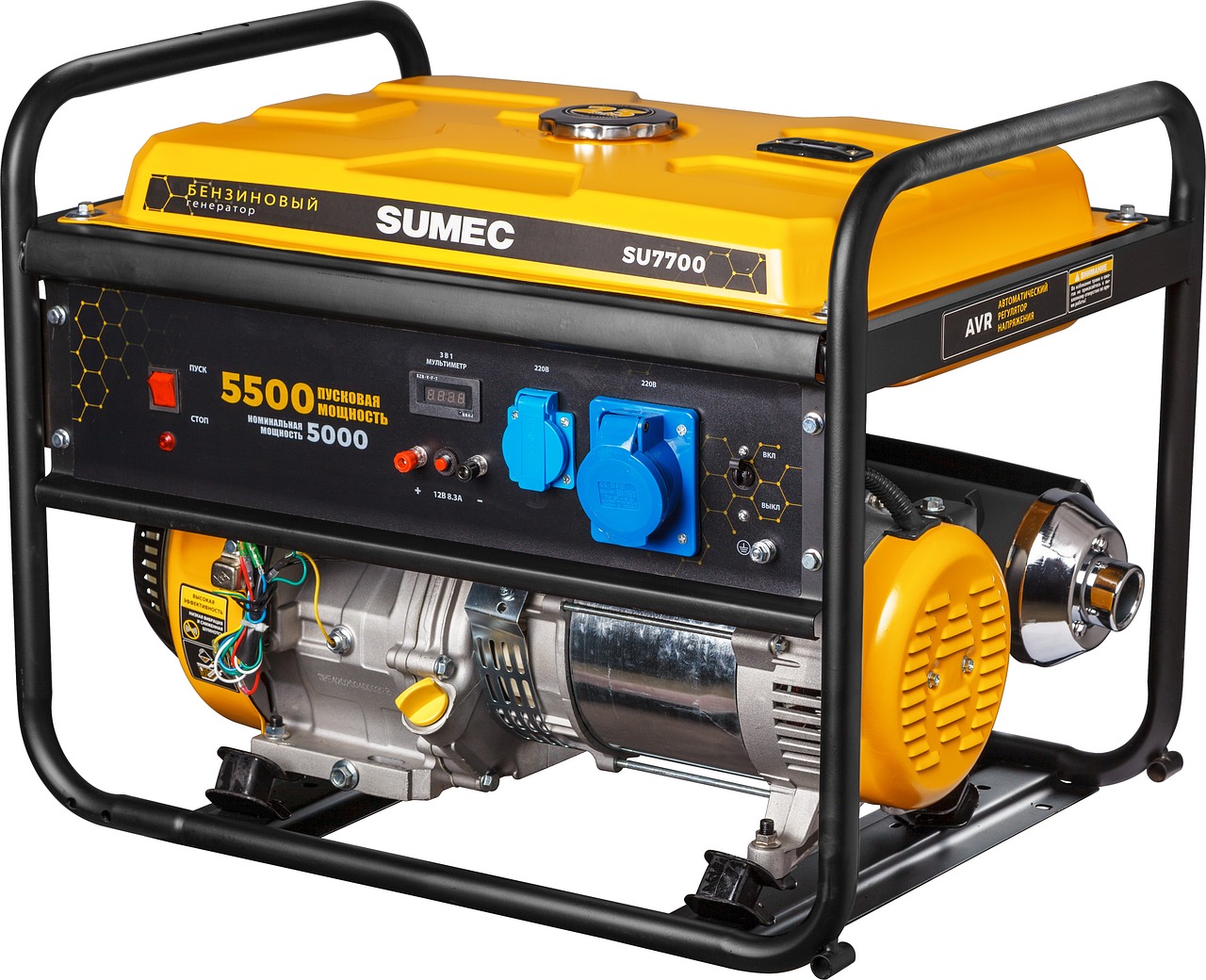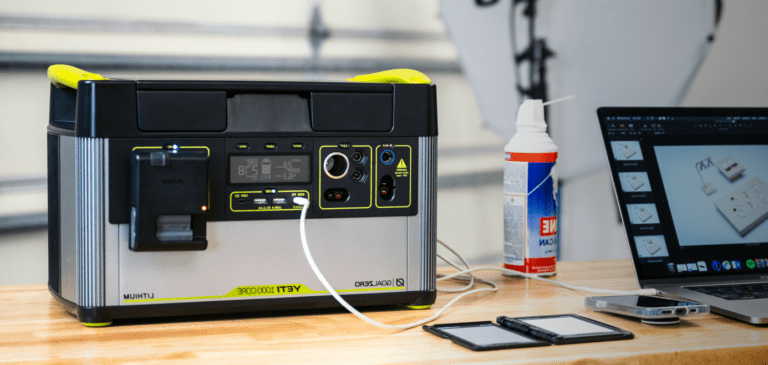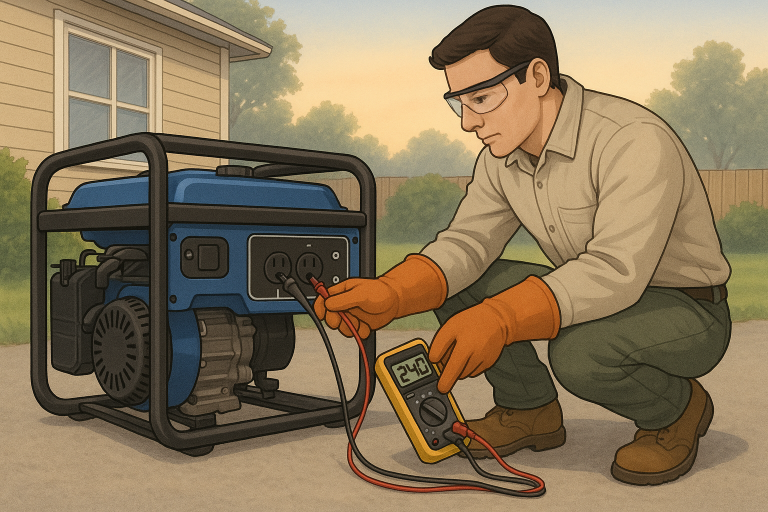How do I properly check the fuel level in my portable generator?
A generator is a crucial backup power source, ensuring that essential appliances and devices continue running during power outages or off-grid situations. However, even the most advanced generator is only as reliable as the fuel that powers it. Running a generator with insufficient fuel can lead to engine damage, performance issues, and costly repairs.
To ensure your generator runs smoothly and efficiently, it’s important to check the fuel level regularly and follow proper refueling procedures. This guide provides a detailed step-by-step approach to safely checking, maintaining, and refueling your generator.
Why Regularly Checking Fuel Levels is Essential
Neglecting fuel level checks can result in various issues, including:
- Unexpected Shutdowns – A generator that runs out of fuel may stop working when you need it most, leaving you without power.
- Engine Damage – Running a generator on low fuel can cause air to enter the fuel system, leading to inefficient combustion and potential engine wear.
- Increased Maintenance Costs – Clogged fuel lines, damaged injectors, and contaminated fuel can lead to expensive repairs or component replacements.
- Longer Downtime – If your generator stops due to an empty fuel tank, you may need to prime the fuel system, which can be time-consuming.
To avoid these problems, incorporate fuel checks into your regular generator maintenance routine.
Step-by-Step Guide to Checking Your Generator’s Fuel Level
Step 1: Locate the Fuel Gauge
- Most generators come equipped with a fuel gauge located on the control panel or near the fuel tank.
- The fuel gauge may display the level as a percentage (0% to 100%), gallons/liters, or via “F” (Full) and “E” (Empty) indicators.
- If you’re unsure of its location, refer to the generator’s owner’s manual for guidance.
- In case your generator lacks a fuel gauge, you may need to open the fuel cap and visually inspect the fuel level.
Step 2: Prepare for a Safe Fuel Check
Before checking the fuel level, it’s important to follow proper safety procedures to avoid accidents or injuries.
- Turn Off the Generator – Always power down the generator and unplug all connected devices before performing maintenance.
- Let the Engine Cool – If the generator has been running, allow at least 10–15 minutes for it to cool down. Checking fuel levels while the engine is hot can be dangerous, as fuel vapors are highly flammable.
- Work in a Well-Ventilated Area – If checking the fuel indoors, ensure there is proper ventilation to prevent inhaling harmful fuel vapors.
- Wear Protective Gear – Using gloves and safety goggles can help protect against accidental fuel spills or splashes.
Step 3: Check the Fuel Level
- Read the fuel gauge to determine the current fuel level.
- If your generator does not have a fuel gauge, carefully remove the fuel cap and look inside the tank using a flashlight.
- The fuel level should ideally be between the “F” (Full) and “E” (Empty) marks.
- If the fuel level is low, it’s time to add more fuel before operating the generator.
Step 4: Add Fuel (If Necessary)
If the fuel level is below the recommended range, follow these steps to safely refuel your generator:
- Use the Correct Fuel Type – Check your generator’s manual to determine whether it requires gasoline, diesel, or propane. Using the wrong fuel type can severely damage the engine.
- Choose Clean, Fresh Fuel – Stale or contaminated fuel can clog fuel lines and reduce efficiency. If the fuel has been sitting for more than 3 months, consider replacing it with fresh fuel.
- Use a Funnel for Precision – A funnel prevents spills and ensures the fuel enters the tank smoothly.
- Avoid Overfilling – Leave some space in the tank to allow for fuel expansion and prevent overflow.
- Secure the Fuel Cap – Once refueling is complete, tightly close the fuel cap to prevent leaks and vapor loss.
- Wipe Up Spills Immediately – Use a dry cloth to clean any spilled fuel and dispose of it safely.
Step 5: Establish a Routine for Checking the Fuel Level
To maintain your generator’s efficiency, it’s important to check the fuel level regularly and keep it well-stocked.
How Often Should You Check the Fuel?
- Before Each Use – Always check the fuel level before starting the generator.
- Weekly (For Frequently Used Generators) – If you use your generator often, make it a habit to inspect the fuel level every week.
- Monthly (For Standby Generators) – If your generator is mainly for emergency use, check the fuel level at least once a month.
Additional Maintenance Tips:
- Keep a fuel logbook to track fuel usage and refueling dates.
- Store extra fuel in approved containers in a cool, dry place.
- If the generator will be unused for an extended period, consider draining the fuel tank or using a fuel stabilizer to prevent degradation.
Example: Checking and Refueling Your Generator in Real-Life Scenarios
Scenario 1: Preparing for a Power Outage
You hear that a storm is approaching, and you want to make sure your generator is ready.
- Locate the fuel gauge on the control panel and check the reading.
- Turn off the generator and let it cool if it was recently used.
- Check the fuel level – It’s below 25%, so you decide to add fuel.
- Refuel safely with clean gasoline using a funnel, ensuring not to overfill.
- Secure the fuel cap and wipe any spills, then restart the generator when needed.
Scenario 2: Checking a Generator That Hasn’t Been Used in Months
Your portable generator has been sitting idle for three months, and you want to make sure it’s ready.
- Inspect the fuel gauge – It indicates low fuel.
- Remove the fuel cap and check the quality of the fuel. If it smells stale or appears cloudy, drain and replace it.
- Refill with fresh fuel, following manufacturer guidelines.
- Run the generator briefly to ensure it operates smoothly before storing it again.
Additional Safety Tips for Handling Fuel
- Never refuel a running generator – Always turn off and cool down the generator before adding fuel.
- Store fuel properly – Use approved containers and keep them away from direct sunlight and ignition sources.
- Use a fuel stabilizer – If your generator sits idle for extended periods, adding a stabilizer can prevent fuel from degrading.
- Dispose of old fuel responsibly – Never pour old fuel down drains; instead, take it to a recycling center or hazardous waste facility.
Conclusion
Regularly checking and maintaining your generator’s fuel level is a simple yet essential task that ensures reliable operation. By following these steps, you can prevent unexpected shutdowns, engine damage, and costly repairs. Establishing a consistent maintenance routine will help keep your generator in top condition, ready to provide power when you need it most.
Make it a habit today – a well-maintained generator is a reliable generator! 🚀




